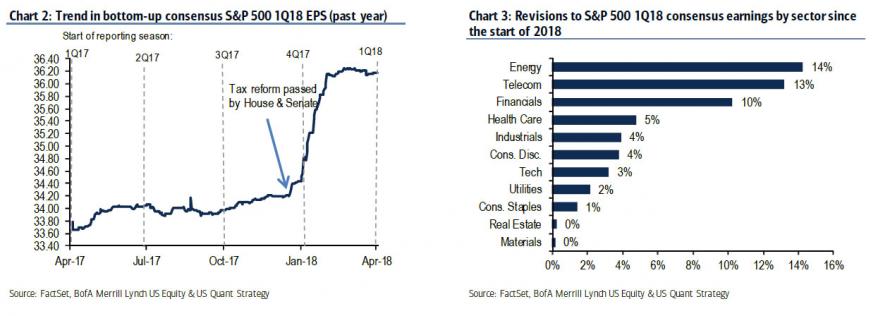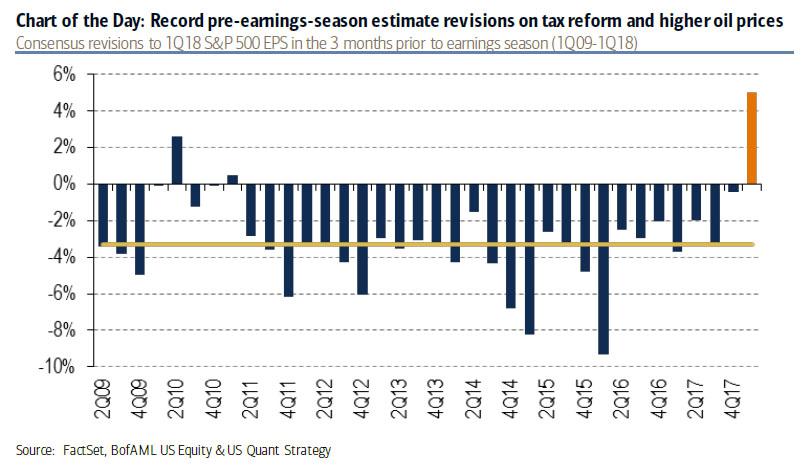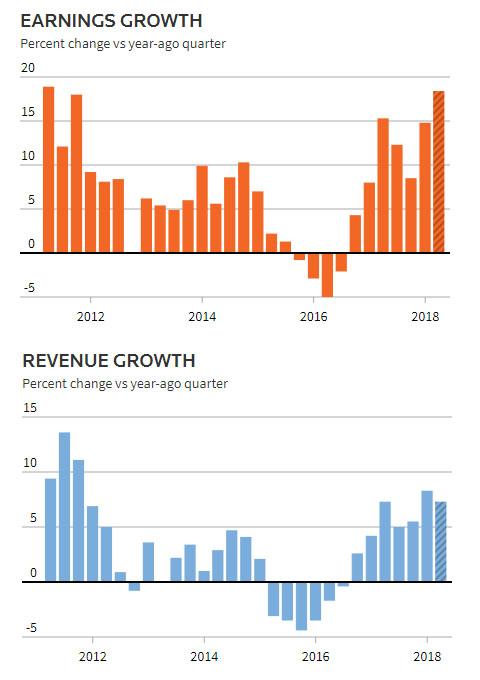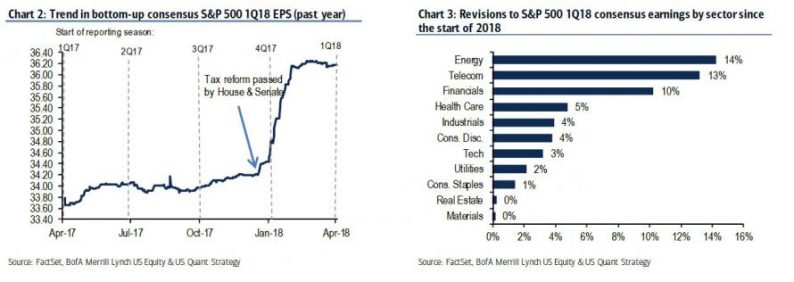During the past month of surging market volatility and spectacular, confidence-sapping rollercoaster moves in the S&P, the one backstop bullish market commentators have used time and again is that Q1 earnings season will be spectacular, an offset to all other bad news.
And, indeed, thanks to the passage of Trump’s corporate tax cuts in late Q4, analyst estimates for first quarter earnings have been revised higher by the most on record amount. According to Factset, the Q1 bottom-up EPS estimate has increased by 5.4% (to $36.24 from $34.37) during this period. On a year-over-year comparable basis, expectations for Q1 profits have risen from an expectation of 12.2% growth on Jan. 1 to 18.4% now, an increase of 6.2% as analysts have factored in the new tax law.

How significant is a 5.4% increase in the bottom-up EPS estimate during a quarter? How does this increase compare to recent quarters? On average, the bottom-up EPS estimate usually decreases during a quarter. During the past five years (20 quarters), the bottom-up EPS estimate has recorded an average decline of 3.9% during a quarter. During the past ten years (40 quarters), the bottom-up EPS estimate has recorded an average decline of 5.5% during a quarter. During the past fifteen years, (60 quarters), the bottom-up EPS estimate has recorded an average decline of 4.1% during a quarter.
In fact, Q1 of 2018 has marked the largest increase in the bottom-up EPS estimate during a quarter since FactSet began tracking the quarterly bottom-up EPS estimate in Q2 2002. The previous record for the largest increase in the bottom-up EPS estimate was 4.8%, which occurred in Q2 2004.


Still, while on the surface, Q1 will be a clear upward outlier, the reality is that most of it (and according to Morgan Stanley, more than all) has already been priced in. Which is a risk because as Reuters reports, while in Q1 corporate America will post its biggest quarterly profit growth in seven years, rising by just over 18% Y/Y…

… even the smallest disappointments could add to further upset the fragile market.
And as noted above, investors have counted on corporate profits – the standing silver lining to the broader market – to provide support as the market endured dramatic swings in recent weeks over concerns about a trade war with China, tougher regulations for high-flying technology companies, and growing retail outflows from virtually all asset classes.
“There is an awful lot of pressure for corporate profits in this first quarter and especially the guidance the companies are going to give to really get this market back on its upward track,” said Chuck Carlson, chief executive officer at Horizon Investment Services in Hammond, Indiana.
Here are the number that are priced in: S&P 500 earnings are expected to rise 18.4% in Q1 according to consensus estimates in the first full quarter since passage of President Donald Trump’s tax cuts, which slashed the corporate tax rate to 21 percent from 35 percent. That would be the biggest profit rise since the first quarter of 2011.











Leave A Comment